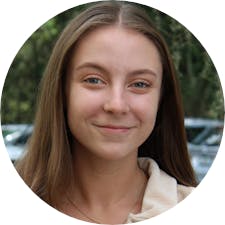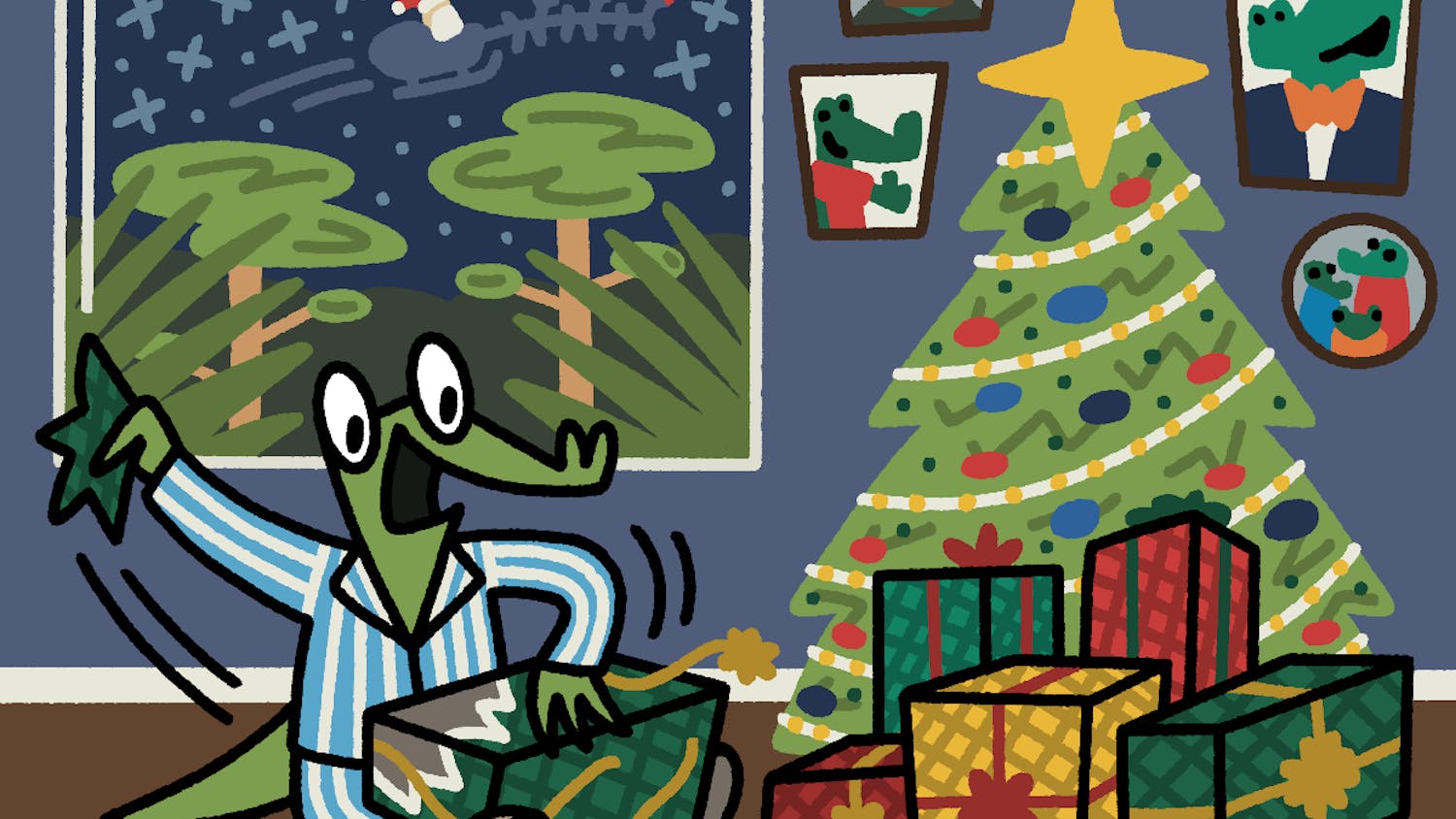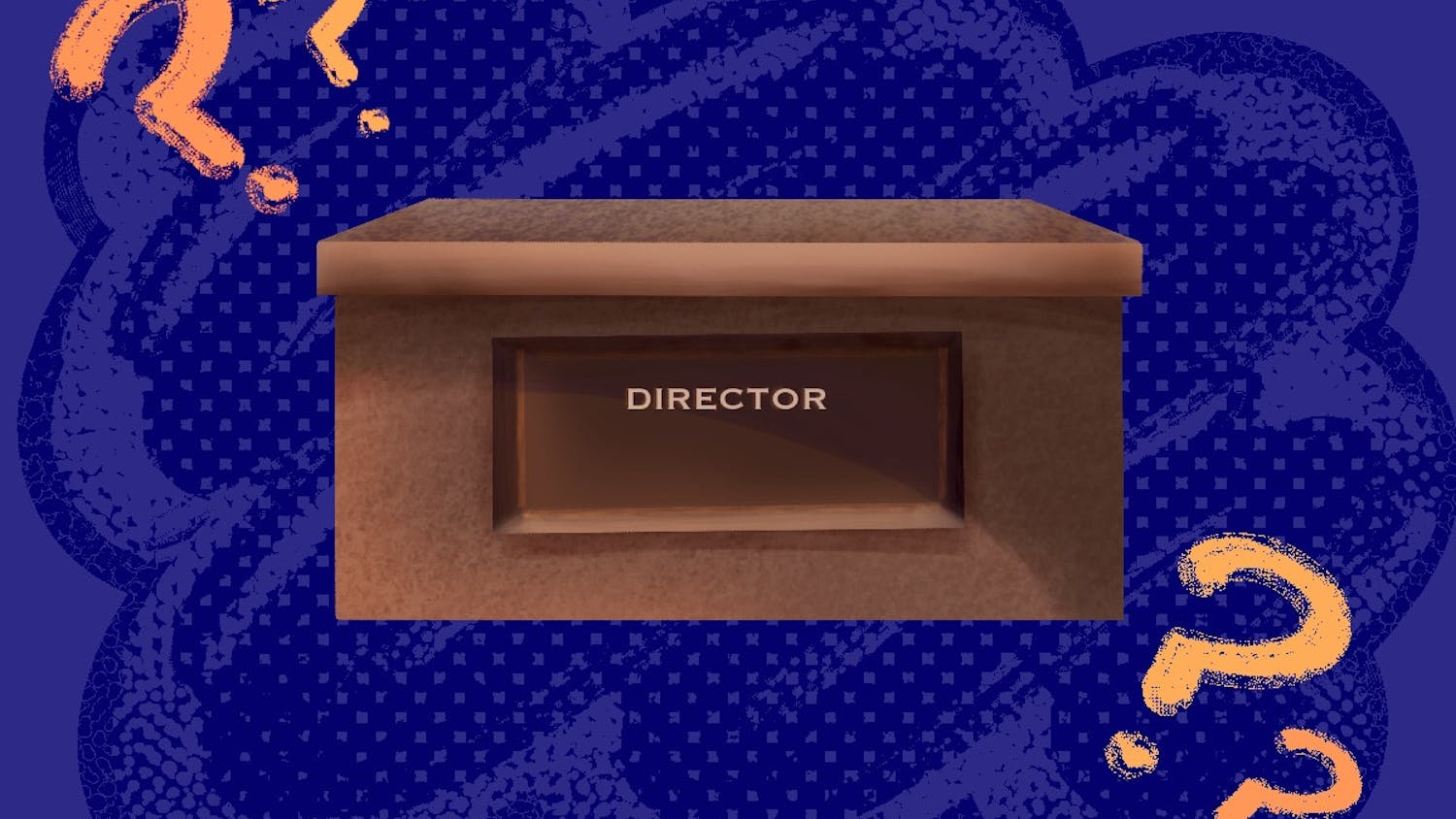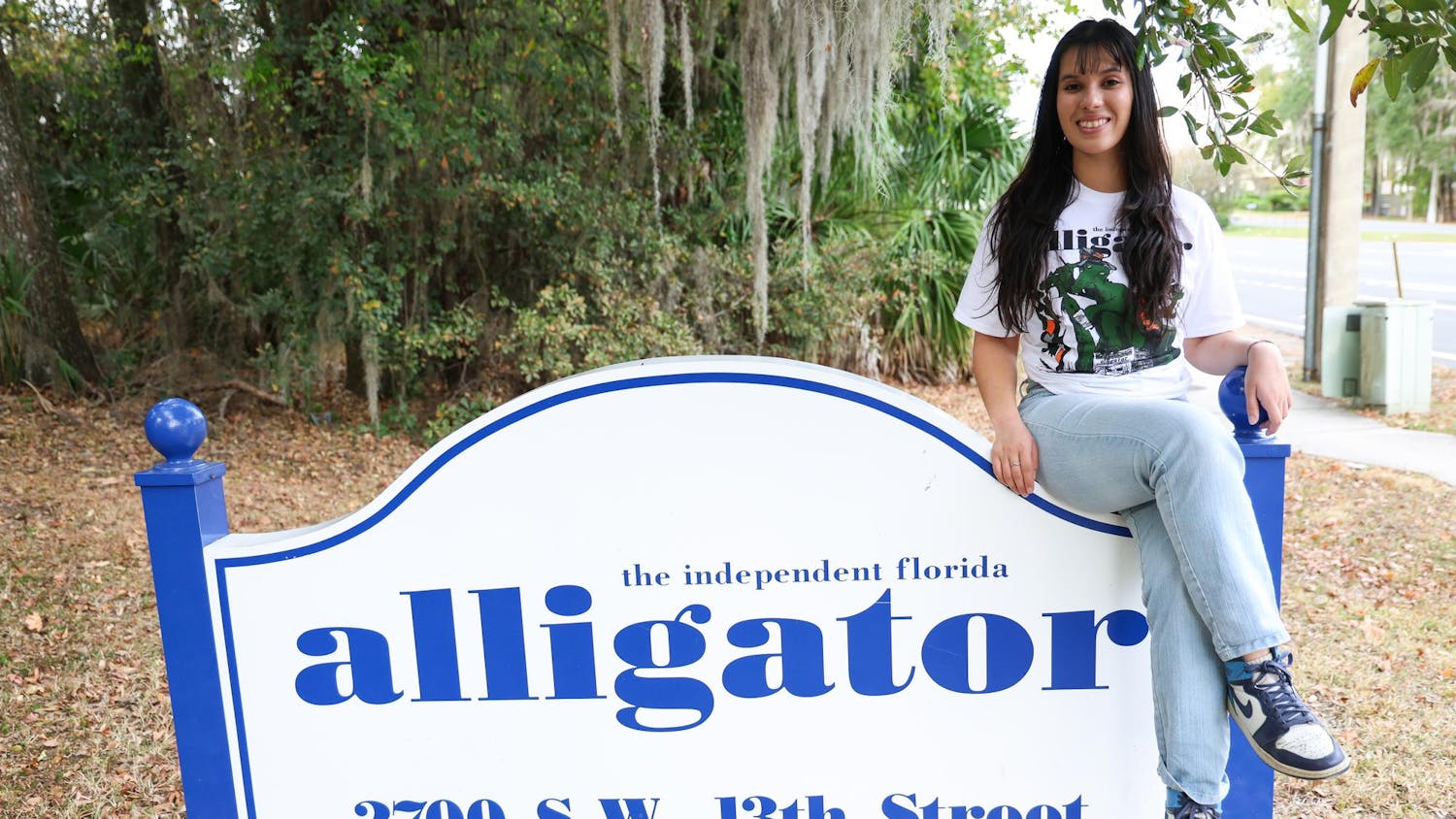A newly planted hickory tree peeks out from the leaves covering McCarty Woods’ floor. Its skinny branches seem fragile among the brush and vines that coat the ground, but the forest is resilient.
New additions to the forest are “signs of hope” for Douglas Soltis, a UF biology department professor and preservation advocate. They are the product of volunteers pulling out invasive species and planting native ones.
McCarty Woods is 2.9 acres of upland forest in central UF campus. It’s home to healthy, diverse plant life including a large ash tree — an uncommon flora this far south. The woods haven’t received care in about 30 years, Soltis said. The understory became overgrown with invasive species, which stopped the large trees from reproducing.
In March 2021, a 2020-2030 campus master plan threatened the woods as it marked the conservation area a future construction site. Protests, led by the student and faculty organization Save McCarty Woods, broke out against this plan. A petition to save the woods reached more than 14,800 signatures.
UF announced that it wasn’t moving forward with plans to use McCarty Woods as a construction site on March 16.
Now, Save McCarty Wood fights against invasive species, limited resources and lengthy approval processes with UF.
On Feb. 12, about 40 volunteers gathered in the woods to plant native shrubs and trees for the first time in the woods’ history. Save McCarty Woods, the organization leading conservation efforts for the area, raised more than $7,000 on Gator Giving Day, Soltis wrote in an email.
In under a year, the conservation crew made progress in restoring the woods, but they still rely on volunteers and raising their own funds.
Lengthy approval processes can delay planting by months. By the time the UF Lands, Vegetation and Lakes committee approves anything, approved plants are all gone, Soltis said.
Soltis purchases the natives from a Melrose nursery, the only nursery in north Florida that grows them. By the time his list of plants is approved, the nursery may be out of the species, he said. Then he has to choose other plants that haven’t been approved.
In December, UF Facilities Services sent a grounds crew to perform a routine cleanup along the outskirts of the woods on McCarty drive. Brush grew into the parking lot and blocked street lights, said Mark Helms, assistant vice president of facilities services.
The director of grounds allowed Soltis to mark plants to ensure they were not cut back. Helms said the crew stayed outside of the conservation area, but Soltis said they went 10 feet past what was originally promised.
UF Facilities is now working with the UF Office of Sustainability and Planning, Design and Construction to improve perimeter markings of conservation areas, Helms said. The current lack of markings can confuse groundworkers who use an aerial map.
Cutting along the edges demoralized many of the volunteers, Soltis said. The newly barren forest edge created room for invasive species to enter.
For more than 20 years, invasives have outcompeted a lot of the native vegetation that used to occur in the woods, said Dr. Lucas Majure, keeper of the UF Herbarium. Cat’s claw covers the forest floor and climbs up trees. Small trees may be engulfed by the vine, which hinders growth.
So volunteers clipped back a lot of the invasive brush — creating light gaps in the tree canopy to allow for growth.
“We’ve literally pulled out probably thousands of pounds of biomass in terms of invasives that were in here,” Majure said.
Organizers wanted to reintroduce native species, increase diversity and beautify the woods by adding shade-tolerant plants in the forest and sun-loving shrubs and trees along the outskirts, Majure said.
There were 13 different native species planted Feb. 12 including American beautyberry, a shrub that produces dark berries that can be used for jellies and wines; iron wheat, which produces dark purple flowers; and red buckeye, a native shrub once common to forests throughout Alachua County, Majure said.
Returning native species into the forest will help restore it into a functional habitat, which will benefit the organisms that rely on the woods, Soltis said.
“As you lose species, you just lose diversity,” Soltis said. “We just have to get this to a point where it’s sustaining; by that, I mean that these trees are able to reproduce again on their own.”
McCarty Woods is a beneficial asset to the UF community, he said.
“This is also a great place for people to walk through and relax,” he said. “It’s a great teaching laboratory.”
Natural areas with large trees, like McCarty Woods, are also arguably a carbon offset, or help to reduce carbon dioxide emissions, Soltis said.
Ultimately conservation organizers have seen an immense amount of change in the last year.
“Right now you can look into that forest and you can see stuff,” Soltis said, pointing at an east entrance. “Before, you couldn't do that. It was so overgrown with some shrubs and trees that had gotten in there.”
The focus for volunteers now is watering the newly planted native species as temperatures increase. They need as many people as possible to help with this project, Soltis said and anyone is welcome. Updates on volunteer opportunities and McCarty Woods are posted on Twitter @soltislab.
Contact Lucille Lannigan llannigan@alligator.org. Contact her on Twitter @lucillelannigan.

Lucy is a senior journalism major and the metro editor for The Alligator. She has previously served as a news assistant and the East Gainesville reporter for the metro desk as well as the health and environment reporter on the university desk. When she’s not doing journalism you can find her painting or spending time outside.





